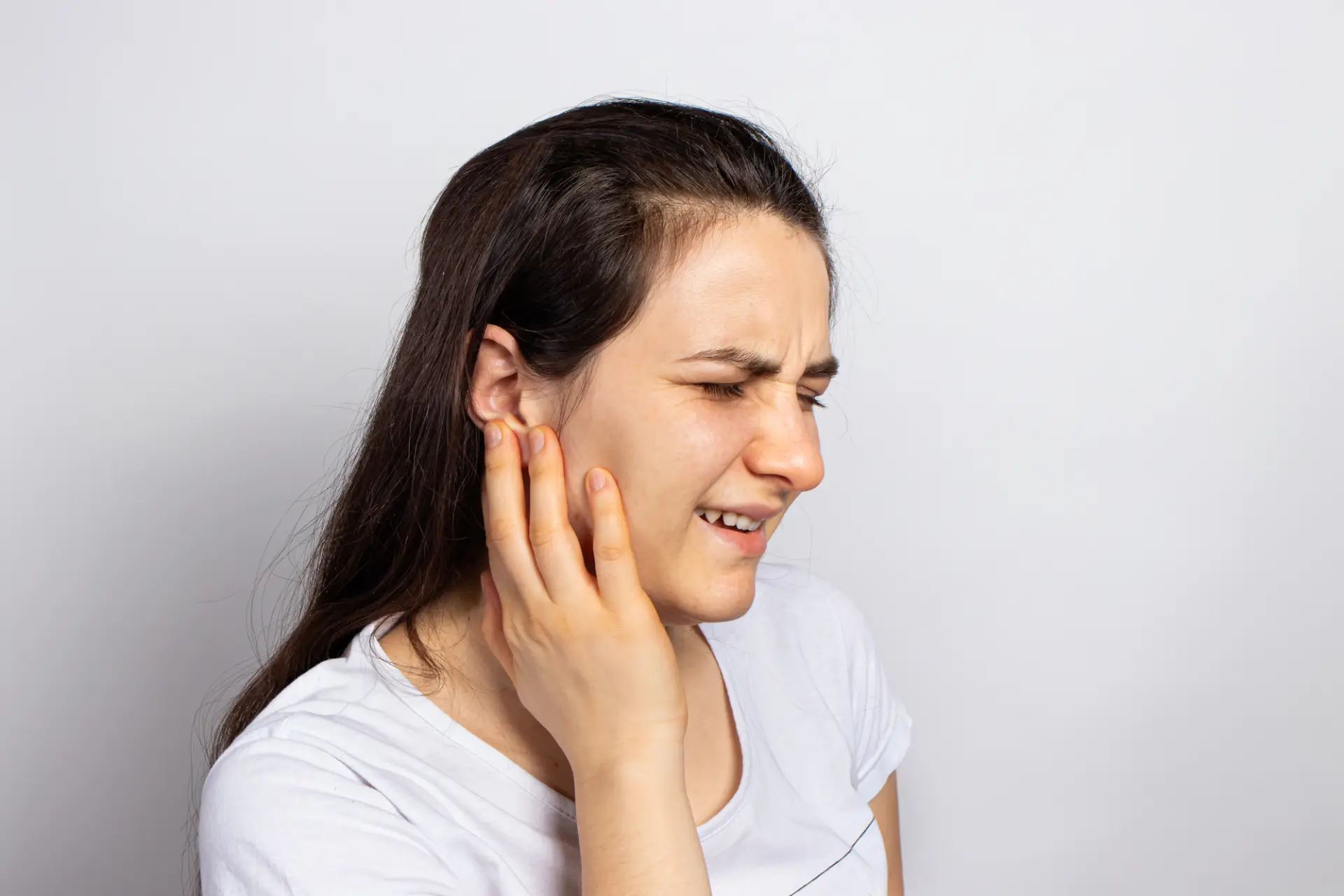What are Temporomandibular Joints?
Temporomandibular means temporal bone (the side and base of the skull) and mandible (the lower jaw). Temporomandibular joints are the two joints on either side of the face and in front of the ears, connecting your lower jaw to the skull. These joints are responsible for jaw movement, enabling us to eat, chew, and perform other functions.
What is TMD?
TMD stands for Temporomandibular dysfunction or Temporomandibular disorder, conditions affecting your temporomandibular joints and other surrounding ligaments and muscles. The disorder causes difficulty opening or closing the mouth, headaches, neck, and jaw pain.
Causes of Temporomandibular Disorders
There are many potential causes of TMJ disorders, including:
- Bruxism:
One of the primary causes of TMJ disorders is bruxism, a condition characterized by grinding or clenching of the teeth, often during sleep. The excessive force exerted on the TMJ can lead to inflammation, discomfort, and, eventually, the development of TMJ disorders.
- Misaligned Bite or Jaw:
A misaligned bite, also known as malocclusion, can put excessive stress on the TMJ. When the upper and lower teeth do not fit together properly, it can result in an uneven distribution of pressure on the joint, leading to TMJ-related issues.
- Trauma and Injury:
Accidents or any form of trauma to the jaw can cause significant damage to the TMJ. Such injuries may disrupt the normal functioning of the joint, triggering the onset of TMJ disorders.
- Arthritis and Joint Diseases:
Conditions such as rheumatoid arthritis and osteoarthritis can affect the TMJ, causing inflammation and damage to the joint. The body’s immune response in arthritis can target the TMJ, leading to pain, swelling, and difficulty in jaw movement.
- Excessive Gum Chewing:
Believe it or not, the constant and excessive use of chewing gum can contribute to TMJ disorders. The repetitive chewing motion, especially if done vigorously, can strain the TMJ and surrounding muscles, ultimately leading to dysfunction.
- Genetic Predisposition:
Some individuals may be genetically predisposed to developing TMJ disorders. If there’s a family history of jaw problems or disorders, there’s an increased likelihood that an individual may also experience issues with their TMJ.
- Stress and Anxiety:
Emotional stress and anxiety can manifest physically in various ways, including jaw clenching and teeth grinding. The persistent tension in the jaw muscles can contribute to the development of TMJ disorders over time.
Symptoms of Temporomandibular Disorders
The signs and symptoms of TMJ disorders can vary, but may include:
- Jaw pain and tenderness on one or both sides of the face
- Difficulty or discomfort while chewing
- Unusual Sounds when opening or closing the mouth due to disc displacement within the TMJ
- Limited jaw movement or jaw getting stuck in certain position while opening the mouth
- Facial fatigue or muscle tension while talking, chewing, or other stressful situations.
- Ear pain or persistent buzzing sounds in the Ears (Tinnitus)
- Headaches and migraines
- Facial swelling due to inflammation in the TMJ or surrounding tissues
Chiropractic Treatment For TMD
Chiropractic care of alignment philosophy is crucial in jaw movement and function. Here’s how ASAP treats TMD disorders:
Chiropractic Techniques for TMD:
- Spinal Adjustments: Through manual manipulation techniques, chiropractors can address misalignments in the spine and neck that may contribute to TMD symptoms. Proper spinal alignment can positively impact the musculoskeletal system, including the jaw.
- TMJ Adjustments: Chiropractors may use gentle, hands-on techniques to adjust the alignment of the jaw joint, addressing imbalances and promoting optimal function.
Muscle Relaxation and Trigger Point Therapy:
- Soft Tissue Manipulation: Chiropractors may employ soft tissue manipulation techniques to relieve muscle tension around the jaw. This can include massage, myofascial release, and trigger point therapy.
Posture Correction:
- Evaluating and Correcting Posture: Chiropractors assess overall posture, including head and neck positioning, which can directly impact TMJ health. They may recommend exercises and adjustments to improve posture and alleviate strain on the jaw.
Collaboration with Dental Professionals:
- Customized Treatment Plans: Chiropractors often collaborate with dentists to create customized treatment plans for individuals with TMD. This may include a combination of chiropractic adjustments, dental interventions, and lifestyle recommendations.
Patient Education:
- Lifestyle and Ergonomic Advice: Chiropractors educate patients about lifestyle factors contributing to TMD, such as stress, diet, and ergonomics. Simple adjustments in daily habits can complement chiropractic care for long-term relief.
Holistic Wellness Approach:
- Nutritional Guidance: Chiropractors may offer nutritional advice to support overall health and reduce inflammation, recognizing the interconnectedness of diet and musculoskeletal well-being.
At ASAP Rehab and Performance, our experienced chiropractors offer personalized care to address the root cause of your pain and improve your overall well-being. From diagnosis to treatment, we aim to help reduce pain and enhance quality of life.
Conclusion
ASAP Rehab and Performance is dedicated to providing effective treatment for TMJ pain sufferers. Our team of experienced chiropractors offers personalized care to address the root cause of your pain and improve your overall well-being. From diagnosis to treatment, our goal is to help alleviate your pain and improve your quality of life. Don’t let TMJ pain control your life, schedule an appointment today and take the first step towards relief. Contact us today to schedule an appointment.

